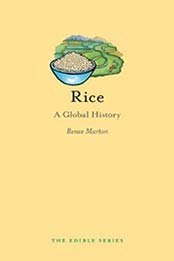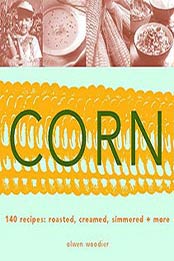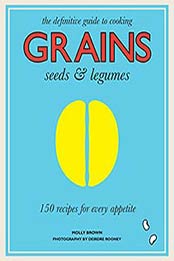Nuts: A Global History by Ken Albala [1780232829, Format: PDF]
Nuts: A Global History (Edible) by Ken Albala
- Print Length: 128 Pages
- Publisher: Reaktion Books
- Publication Date: April 15, 2014
- Language: English
- ASIN: B00KD8YWQM
- ISBN-10: 1780232829
- ISBN-13: 978-1780232829
- File Format: PDF
From almonds and pecans to pistachios, cashews, and macadamias, nuts are as basic as food gets—just pop them out of the shell and into your mouth. The original health food, the vitamin-packed nut is now used industrially, in confectionary, and in all sorts of cooking. The first book to tell the full story of how nuts came to be in almost everything, Nuts takes readers on a gastronomic, botanical, and cultural tour of the world.
Tracking these fruits and seeds through cultivation, harvesting, processing, and consumption—or non-consumption, in the case of those with nut allergies—award-winning food writer Ken Albala provides a fascinating account on how they have been cooked, prepared, and exploited. He reveals the social and cultural meaning of nuts during various periods in history, while also immersing us in their modern uses. Packing scrumptious recipes, surprising facts, and fascinating nuggets inside its hardcover shell, this entertaining and informative book will delight lovers of almonds, hazelnuts, chestnuts, and more.
Rice: A Global History by Renee Marton [1780233507, Format: PDF]
Rice: A Global History (Edible) by Renee Marton
- Print Length: 144 Pages
- Publisher: Reaktion Books
- Publication Date: October 15, 2014
- Language: English
- ASIN: B011LDV5PI
- ISBN-10: 1780233507
- ISBN-13: 978-1780233505
- File Format: PDF
From jambalaya to risotto, curry to nasi kandar, few foods are as ubiquitous in our meals as rice. A dietary staple and indispensable agricultural product from Asia to the Americas, the grain can be found in Michelin restaurants and family kitchens alike. In this engaging culinary history, Renee Marton explores the role rice has played in society and the food economy as it journeyed from its beginnings in Asia and West Africa to global prominence.
Examining the early years of rice’s burgeoning popularity, Marton shows that trade of the grain was driven by profit from both high status export rice and the lower-quality versions that fed countless laborers. In addition to urbanization and the increase in marketing and advertising, she reveals that rice’s rise to supremacy also came through its consumption by slave, indentured servant, and immigrant communities. She also considers the significance rice has in cultural rituals, literature, music, painting, and poetry. She even shows how the specific rice one consumes can have great importance in distinguishing one’s identity within an ethnic group. Chock full of delicious recipes from across the globe, Rice is a fascinating look at how this culinary staple has defined us.






